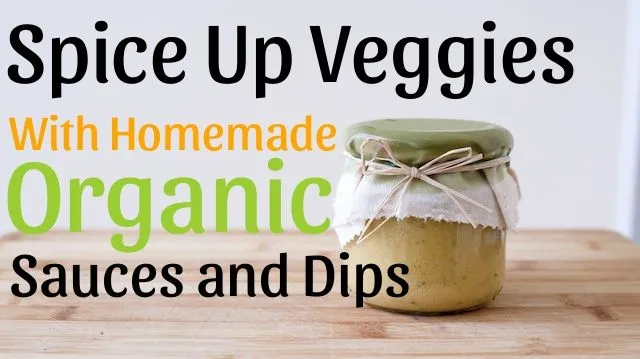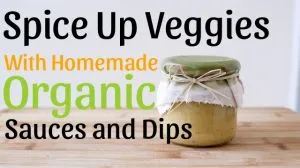
- Share on Facebook137
- Share on Pinterest
- Share on Twitter
Despite the health benefits of eating more vegetables, it can sometimes be difficult to get family members, especially children, to eat their veggies. Adding a sauce can help spice up any vegetable dish, increasing the appeal with a rich set of aromas and flavors.
Here are some nutritious sauces that pack a flavor punch and are great with vegetables.
Hummus
Hummus is quickly gaining ground in the health food community. Instead of spending money on packaged hummus that probably contains additives for flavor, create your own using natural, whole foods.
All you’ll need are these basic ingredients:
- 2 cups cooked chickpeas
- 1 tablespoon lemon juice
- 3 tablespoons sesame seeds
- 2 cloves garlic
- ½ teaspoon cumin
- ½ teaspoon cayenne pepper
- Sea salt to taste
Blend together until smooth. For variations, add cheese, peppers or curry paste. You can use this recipe to dip raw vegetables, or thin it out with water or extra virgin olive oil to use as a salad dressing or sauce over vegetables and rice.
Pesto
A classic Italian favorite, pesto is typically made of toasted pine nuts, but can easily be made with cashews as well.
All you need are:

- 1/3 cup pine nuts or cashews
- 1/3 cup nutritional yeast
- 5 garlic cloves, chopped
- 1 bundle fresh basil, chopped
- 2/3 cup olive oil
If pine nuts are available in your area, dry roast them in a pan. Do not toast cashews. Instead, allow them to soak overnight. Add the nuts and nutritional yeast to your food processor. Chop garlic and basil before adding them. Pulse together, drizzling olive oil a little at a time, adding salt and pepper to taste. This sauce works perfectly in mushroom and roasted vegetable dishes, as well as stir fries and salads.
Teriyaki Sauce
Teriyaki that is available in stores is packed with refined sugar, corn syrup and gluten. To make your own whole-food alternative, you will need the following:
- 2 tsp freshly grated ginger or dried, ground ginger
- 3 garlic cloves, chopped
- 1 cup naturally fermented gluten-free soy sauce
- 2 tablespoons each of rice vinegar, sesame oil and honey
- 1 teaspoon of orange juice (optional)
Whisk together and heat over the stove until it thickens. To thicken into a glaze, add 1 teaspoon of a non-GMO thickening agent, such as arrowroot powder, organic potato starch, or a non-GMO brand of corn starch. Teriyaki goes well over rice and stir-fries, and can be used as a dipping sauce for raw veggies and vegetable rolls.
Coconut Curry Sauce
Coconut curry provides both sweet and spicy notes that complement sweet vegetables, root vegetables and leafy greens.
- 1 ¼ cups coconut milk
- 2 chopped garlic cloves
- ½ cup chopped fresh basil
- 2 teaspoons coconut sugar or raw stevia
- ½ teaspoon onion powder (optional)
- 1 tablespoon each of curry powder and cayenne powder
- 1 teaspoon red pepper flakes
- 2 tablespoons naturally fermented gluten-free soy sauce
- 2 tablespoons coconut or olive oil
- Sea salt to taste
Mix coconut milk with the coconut sugar or stevia and add to a skillet. Stir in oil and heat for thirty seconds. Add remaining ingredients, except for the basil, and stir. Bring skillet to a boil. Stir until it thickens. Remove from heat, then add fresh basil.
Although many sauces contain high-fructose corn syrup, gluten, monosodium glutamate and other questionable ingredients, creating your own sauces will allow you to control the ingredients and flavors used when preparing veggie dishes that your whole family will enjoy.
-The Alternative Daily
Sources:
http://www.realsimple.com/food-recipes/browse-all-recipes/curry-coconut-sauce
http://www.thehealthyhomeeconomist.com/homemade-teriyaki-sauce
http://allrecipes.com/recipe/yummy-vegan-pesto-classico
http://blog.fatfreevegan.com/2012/03/hummus-in-the-blender.html
- Share on Facebook137
- Share on Pinterest
- Share on Twitter

